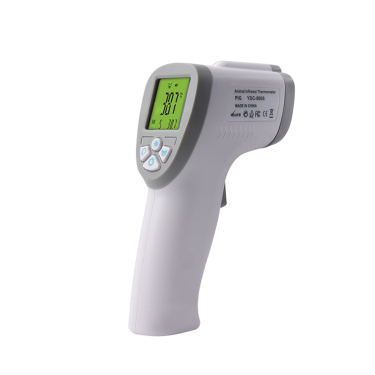
# Dog Thermometer: Essential Tool for Pet Health Monitoring
## Why Every Pet Owner Needs a Dog Thermometer
Monitoring your dog’s health is a crucial responsibility for any pet owner. One of the most important tools in your pet care arsenal should be a reliable dog thermometer. Unlike human thermometers, these specialized devices are designed specifically for canine use, providing accurate readings that can help detect early signs of illness.
## Understanding Normal Dog Temperature
Before using a dog thermometer, it’s essential to know what constitutes a normal temperature range for your furry friend:
– Normal range: 101°F to 102.5°F (38.3°C to 39.2°C)
– Mild fever: 103°F (39.4°C)
– High fever: 104°F (40°C) or above – requires immediate veterinary attention
– Hypothermia: Below 99°F (37.2°C)
## Types of Dog Thermometers
### Digital Rectal Thermometers
The most accurate option for measuring a dog’s core temperature. These thermometers provide quick readings (usually within 10-30 seconds) and are designed with flexible tips for safety.
### Ear Thermometers
Less invasive than rectal thermometers, these devices measure infrared heat waves from the ear canal. While convenient, they may be slightly less accurate than rectal thermometers.
### Non-contact Infrared Thermometers
These allow temperature measurement without physical contact by scanning the dog’s skin surface. They’re the least invasive but also the least accurate option.
## How to Use a Dog Thermometer Properly
For rectal thermometers (the most accurate method):
1. Lubricate the thermometer tip with petroleum jelly or water-based lubricant
2. Gently lift your dog’s tail and insert the thermometer about 1 inch into the rectum
3. Hold it steady until it beeps (for digital models) or for about 2 minutes (for mercury thermometers)
4. Clean the thermometer thoroughly after each use
## When to Check Your Dog’s Temperature
Regular temperature checks aren’t necessary for healthy dogs, but you should monitor it when you notice:
– Lethargy or unusual behavior
– Loss of appetite
– Shivering or panting excessively
– Vomiting or diarrhea
– Before and after vaccinations
– During recovery from illness or surgery
## Choosing the Right Dog Thermometer
When selecting a thermometer for your pet, consider:
– Accuracy: Look for veterinary-grade devices
– Speed: Faster readings reduce stress for your dog
– Durability: Choose waterproof models if possible
Keyword: dog thermometer
– Ease of cleaning: Important for hygiene
– Display: Large, easy-to-read numbers are helpful
## Maintaining Your Dog Thermometer
Proper care ensures accurate readings and prevents contamination:
– Clean with alcohol wipes after each use
– Store in a protective case
– Replace batteries regularly
– Check calibration periodically
– Replace if damaged or giving inconsistent readings
A dog thermometer is a small investment that can make a big difference in your pet’s health. By allowing you to monitor one of the most vital signs of canine wellbeing, it helps you catch potential health issues early and provide better care for your furry companion. Remember that while a thermometer is valuable, it doesn’t replace professional veterinary care when needed.